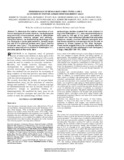Mostrar el registro sencillo del ítem
Epidemiology of human rotavirus types 1 and 2 as studied by enzyme-linked immunosorbent assay
| dc.creator | Yolken, Robert H. | |
| dc.creator | Wyatt, Richard G. | |
| dc.creator | Hisses, George | |
| dc.creator | Brandt, Carld | |
| dc.creator | Rodríguez, William J. | |
| dc.creator | Wha Kim, Hyun | |
| dc.creator | Parrot, Robert H. | |
| dc.creator | Urrutia, Juan José | |
| dc.creator | Mata Jiménez, Leonardo | |
| dc.creator | Greenberg, Harry B. | |
| dc.creator | Kapikian, Albert Z. | |
| dc.creator | Chanock, Robert M. | |
| dc.date.accessioned | 2014-08-28T22:17:29Z | |
| dc.date.available | 2014-08-28T22:17:29Z | |
| dc.date.issued | 1978-11-23 | |
| dc.identifier.citation | http://www.nejm.org/doi/full/10.1056/NEJM197811232992103 | |
| dc.identifier.issn | 0028-4793 | |
| dc.identifier.other | ISSN Electrónico: 1533-4406 | |
| dc.identifier.uri | https://hdl.handle.net/10669/11109 | |
| dc.description | artículo (arbitrado) -- Universidad de Costa Rica, Instituto de Investigaciones en Salud. 1978 | es_ES |
| dc.description.abstract | To determine the relative importance of two known serotypes of human rotavirus, we developed an enzyme-linked immunosorbent assay to differentiate serotype-specific rotavirus antigen and antibody. Using this technic, we studied the epidemiology of the two serotypes in acute gastroenteritis. Seventy-seven per cent of 414 rotavirus isolates were Type 2, and the remainder were Type 1. The serotype distribution was similar in specimens from children in Washington D.C., and other parts of the world. Seroepidemiological studies revealed that most children living in the Washington, D.C., area acquired antibody to both types by the age of two years. An analysis of children who were reinfected indicated that sequential infections usually involved different serotypes and that illness caused by one serotype did not provide resistance to illness caused by the other serotype. These results suggest that, to be completely effective, a vaccine must provide resistance to both serotypes | es_ES |
| dc.description.sponsorship | Universidad de Costa Rica | es_ES |
| dc.language.iso | en_US | es_ES |
| dc.publisher | The New England Journal of Medicine 299:1156-1161 | es_ES |
| dc.subject | Rotavirus Infections | es_ES |
| dc.subject | Virulencia | es_ES |
| dc.subject | Rotavirus | es_ES |
| dc.subject | Gastroenteritis | es_ES |
| dc.subject | Virus de la Gastroenteritis Transmisible | es_ES |
| dc.subject | Enfermedad transmisible | es_ES |
| dc.title | Epidemiology of human rotavirus types 1 and 2 as studied by enzyme-linked immunosorbent assay | es_ES |
| dc.type | artículo original | |
| dc.identifier.doi | 10.1056/NEJM197811232992103 | |
| dc.description.procedence | UCR::Vicerrectoría de Investigación::Unidades de Investigación::Ciencias de la Salud::Instituto de Investigaciones en Salud (INISA) | es_ES |
Ficheros en el ítem
Este ítem aparece en la(s) siguiente(s) colección(ones)
-
Microbiología [1171]


